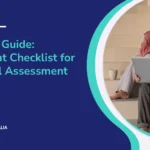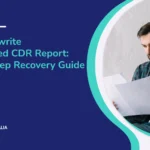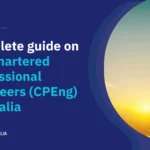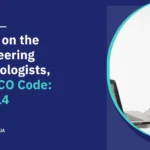
The career episode is one of the most important aspects of a Competency Demonstration Report. Engineers Australia (EA) requires three career episodes from applicants. The career episode is crucial for demonstrating your engineering knowledge, abilities, and accomplishments. Many aspects of your employment and engineering experience are depicted here.
You may write your career episodes on the basis of university projects you did throughout your time of study, or for projects, you had in your professional working environment for some company. Writing a career episode involves the same strategies in all instances. We have experts and professional writers that can provide you with the best career episode writing service.
Career episode demonstrates your engineering skills, work experience, and any professional training you acquired. Each career episode must focus on a certain period of your engineering skills. In addition, each episode should demonstrate how you used your engineering abilities in a certain industry.
Engineers Australia requires you to write a career episode as part of your Competency Demonstration Report(CDR) to determine if your engineering abilities and knowledge meet Australian requirements. Engineers who wish to immigrate to Australia must apply under one of EA’s four occupational categories for skilled migration:
- Professional Engineers
- Engineering Technologists
- Engineering Associates
- Engineering Managers
For each of these areas, EA provides a list of competencies. When writing your career episode report, keep in mind that you are demonstrating that you possess all of the competency characteristics listed under the occupation type for which you are applying.
Table of Contents
Career Episode Format
Introduction
The career episode introduction has to be approximately a hundred words. It should serve as an opening to a particular episode. It should contain basic information such as:
- The exact date of the beginning as well as the ending of the career episode
- Name of the educational organization or institution
- The geographical location of your project (city, state, country) where the experience was gained
- Your job position or level at that particular organization
Background
The background should be written in 200-500 words. It should show the background of work and study. It is supposed to provide a refine context to the career episode. It should include the following information about your career episode:
- The type of engineering project you completed
- The project’s primary goal
- The nature of the task area in which your project was focused
- An organizational structure chart emphasizing your place in the project hierarchy
Personal Engineering Activity
The length of the engineering activity section should be between five hundred and one thousand words. The core body of your Career Episode Report (CER) is your personal engineering activity, where you should illustrate your real use of the engineering skills in detail. The following details should be included:
- Your specific task or role in the team
- How you used your engineering skills to complete the assigned responsibilities
- How you complete the project
- Your collaboration with the team member
- Technological issues or obstacles you had, and how did you resolve them
- How you made a significant contribution or created tactics, including any unique or innovative design work
Summary
The final summary section of CER should be fifty to a hundred words long. It should include the following information as well as a summary of the full episode:
- A summary of your project
- Information on whether the project’s aims and objectives were reached.
- If you received any compliments for the project, mention them.
- In the conclusion section, explain how your contribution to the project benefited the project.
Few Tips to Write a Perfect Career Episode
- Select initiatives that demonstrate the importance of your job and the business, as well as abilities and skills.
- When it comes to academic initiatives, you should select those that have the potential for future scalability and play a critical part in the completion and fulfillment of desired goals.
- Include the engineering-related activities that you participated in or were involved in. Projects, internships, other contests, and so forth can all be mentioned, but your exact role or the task on the projects should be defined.
- The EA assessors are more concerned with the individual’s contribution than with the project’s overall efficiency.
- The charts, figures, and other visual aids can be used to further explain your participation in the project. It demonstrates your work’s technical procedure as well as your participation in the project.
- The report requires the use of an active voice. “I prepared,” “I calculated,” and so on.
- Use high-quality CDR samples offered by skilled writers and leading websites as a guide. For guiding reasons, EA’s pre-approved samples would be ideal.
- The framework of a career episode is very important to EA. As a result, you can check for further information on the MSA website (Migration Skills Assessment Booklet).
- Avoid using technical terms, graphs, charts, and other visual aids. Use simple English with significant facts, and figures. Each episode should be 1000-12500 words long.
Conclusion
We have a reputation as the most effective CDR, RPL, and KA02 writing service providers in Australia. A team of skilled writers at CDRAustraliaHelp delivers high-quality CDR report related services to the applicants. We help people from all over the world who want to work as skilled migrants in Australia.




